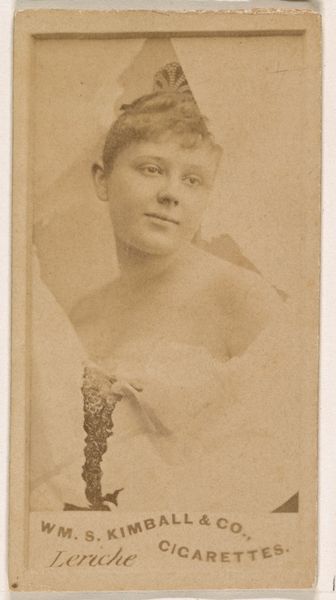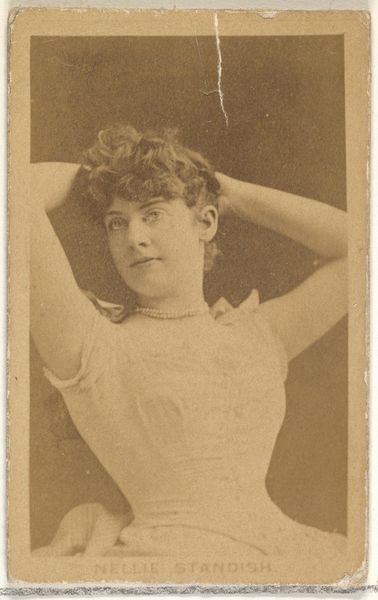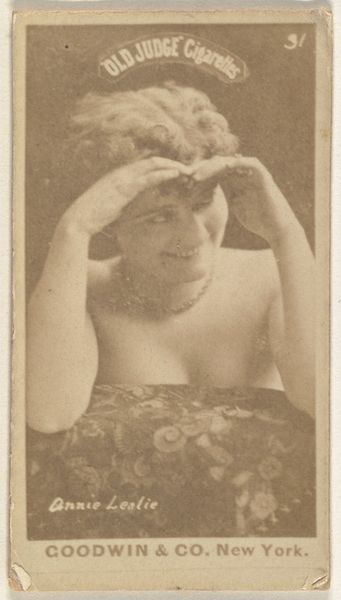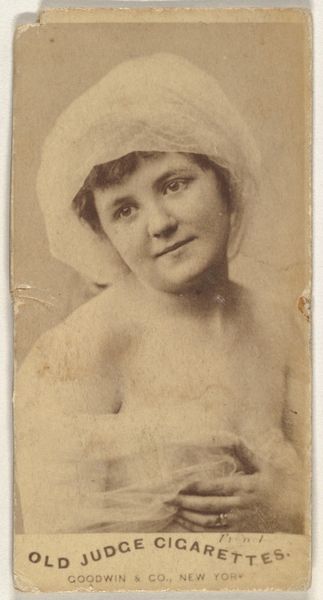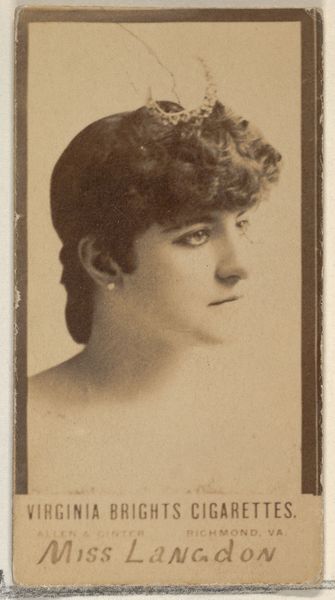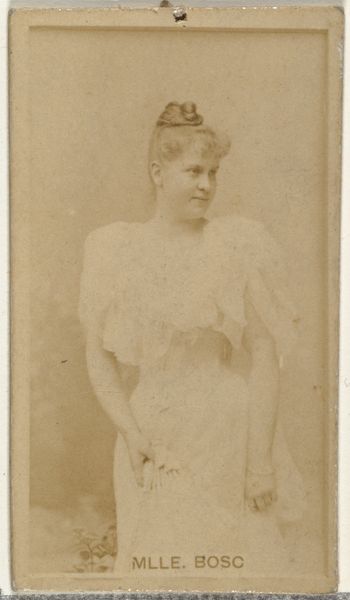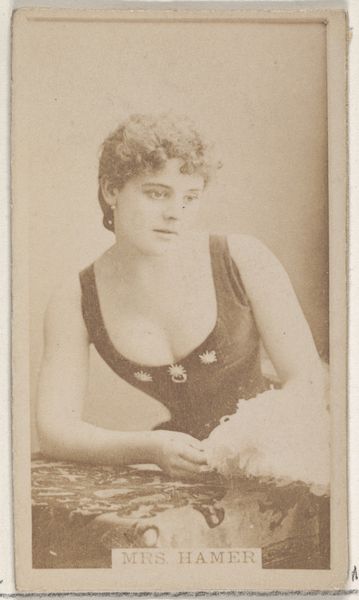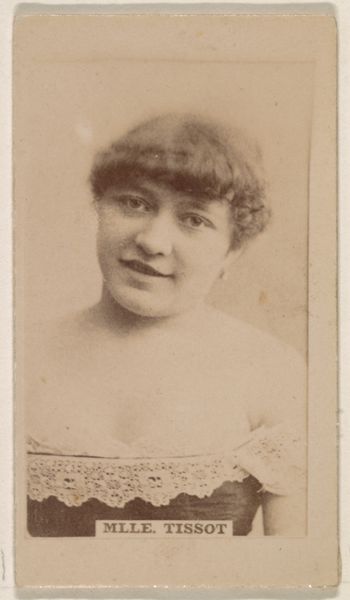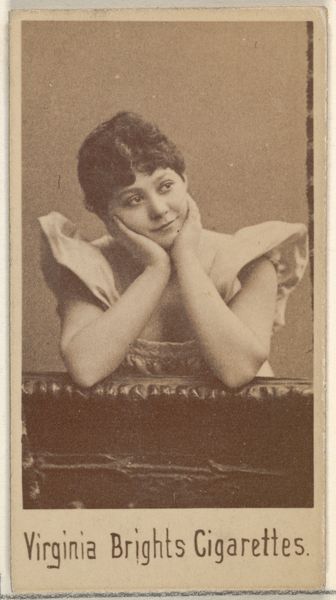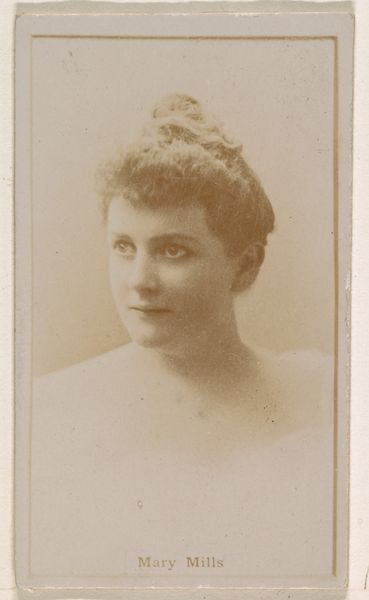
From the Actors and Actresses series (N45, Type 4) for Virginia Brights Cigarettes 1885 - 1891
0:00
0:00
print, photography
#
portrait
# print
#
figuration
#
photography
Dimensions: Sheet: 2 3/4 x 1 3/8 in. (7 x 3.5 cm)
Copyright: Public Domain
Editor: Here we have a portrait from the "Actors and Actresses" series, specifically N45, Type 4, produced between 1885 and 1891 by Allen & Ginter for Virginia Brights Cigarettes. It's a sepia-toned print of a woman, likely an actress of the time. It’s intriguing how this intimate portrait is being used to sell cigarettes! What can you tell me about the historical context here? Curator: Absolutely. These cards were indeed used as marketing tools, tucked inside cigarette packs. We must consider the gaze here. Who is this portrait intended for, and what's the message? It reflects a time of nascent consumerism where women's images were powerfully associated with products, subtly promoting aspirations of glamour, beauty and social status alongside the purchase of cigarettes. Consider also the power dynamics at play: The commodification of the actress' image, and its potential effect on women in the workforce, not necessarily on stage, whose physical appearance would become more strictly policed. How do you see that working here? Editor: I guess the implication is that if you smoke these cigarettes, you too can associate with this kind of glamour and elegance. Do you see this as a proto-feminist or anti-feminist gesture? Curator: It's complicated. The actress, as a working woman, achieved a certain independence. However, her image is exploited within a patriarchal structure for profit. It becomes both an endorsement of a woman’s visibility but only when that visibility sells something. How does this compare to advertising of today? Editor: That's fascinating – a double-edged sword then. So, on the one hand, there's visibility and possibly a measure of agency, but within limits dictated by consumerism and gendered expectations. Looking at advertising today, it's clear we still grapple with similar issues. Curator: Precisely. Understanding the nuanced historical contexts can shed light on the complexities of representation, power, and gender, and how they continue to inform contemporary media.
Comments
No comments
Be the first to comment and join the conversation on the ultimate creative platform.

